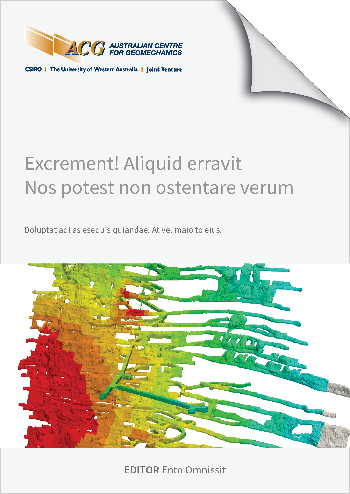A parametric study on cave footprint capacity in discontinuous rock masses

|
Authors: Dehkhoda, S; Reusch, F |
DOI https://doi.org/10.36487/ACG_repo/2435_O-07
Cite As:
Dehkhoda, S & Reusch, F 2024, 'A parametric study on cave footprint capacity in discontinuous rock masses', in Daniel Johansson & Håkan Schunnesson (eds), MassMin 2024: Proceedings of the International Conference & Exhibition on Mass Mining, Luleå University of Technology, Luleå, pp. 1322-1334, https://doi.org/10.36487/ACG_repo/2435_O-07
Abstract:
Maintaining cave footprint stability during production necessitates a deep understanding of geological, geomechanical, and mining engineering factors that control cave initiation and establishment. This involves careful planning, ongoing monitoring, and flexibility to ensure the mining operation remains safe, economically viable, and socially and environmentally responsible. This study assesses the impact of fracture intensity, rock strength, and cave load on extraction level deformation and overall footprint capacity through a series of numerical scenario analyses. The analysis involves a submodeling approach with the discontinuum finite element numerical modelling method using a global mine scale model conducted in earlier studies. The boundary conditions for the submodels are derived from the global model to maintain the high similitude with displacements and the distribution of damage around excavations with resolution to a sub-bolt length scale. The paper will detail the model construction process and formulation of the constitutive model for the rock mass, defects, and ground support. The study's outcome is an overview of the upper- and lower-bound performance levels, representing the most and least favourable conditions for the tested scenarios.
References:
Dehkhoda, S., Reusch, F. & Putzar, G. (2023). A numerical approach for a displacement-based ground support capacity consumption forecast, In J Wesseloo (ed.), Ground Support 2023: Proceedings of the 10th International Conference on Ground Support in Mining, Australian Centre for Geomechanics, Perth, pp.573-590, . 2325_39.
Hoek, E. & Brown, E. T. (2019) The Hoek–Brown failure criterion and GSI – 2018 edition. Journal of Rock Mechanics and Geotechnical Engineering, vol. 11, no. 3, pp. 445––463.
Levkovitch, V., Reusch, F. & Beck, D. (2010). Application of a non-linear confinement sensitive constitutive model to mine scale simulations subject to varying levels of confining stress. In J Zhao, V Laboure, J-P Dudt & J-F Mather (eds), Rock Mechanics in Civil and Environmental Engineering, CRC Press, Boca Raton.
Melati, S., Wattimena, R. K., Sahara, D. P., Syafrizal; Simangunsong, G. M., Hidayat, W., Riyanto, E. & Felisia, R. R. S. (2023). Block Caving Mining Method: Transformation and Its Potency in Indonesia’, Energies, vol. 16, no. 9. .
van As, A. & Guest, A. (2020). The design & operating philosophies of panel vs block caving. In R Castro, F Báez & K Suzuki (eds), MassMin 2020: Proceedings of the Eighth International Conference & Exhibition on Mass Mining, University of Chile, Santiago, pp. 207-220, 10.
© Copyright 2025, Australian Centre for Geomechanics (ACG), The University of Western Australia. All rights reserved.
View copyright/legal information
Please direct any queries or error reports to repository-acg@uwa.edu.au
View copyright/legal information
Please direct any queries or error reports to repository-acg@uwa.edu.au